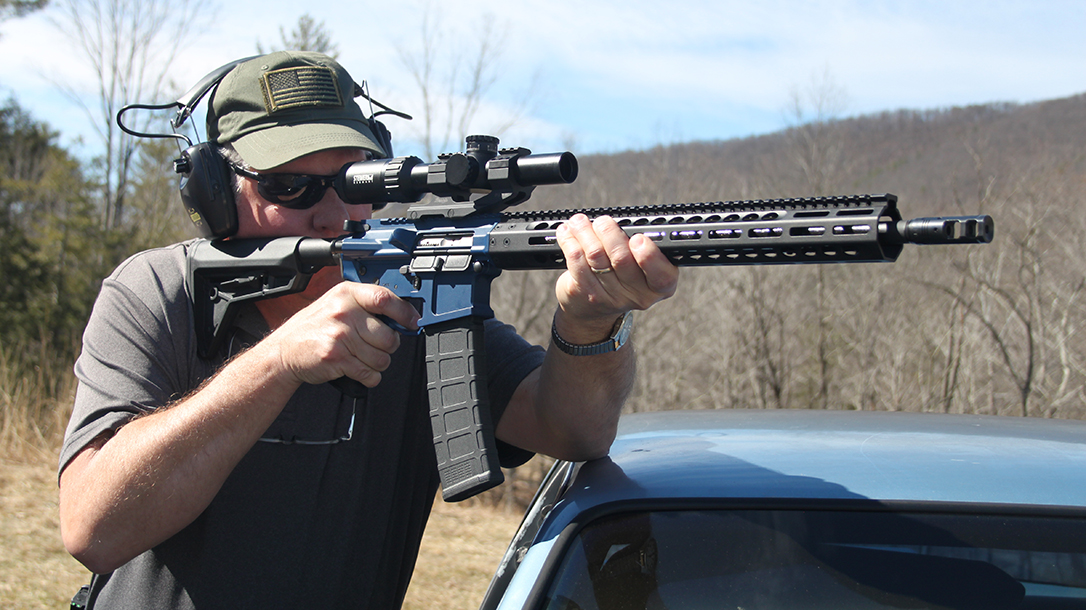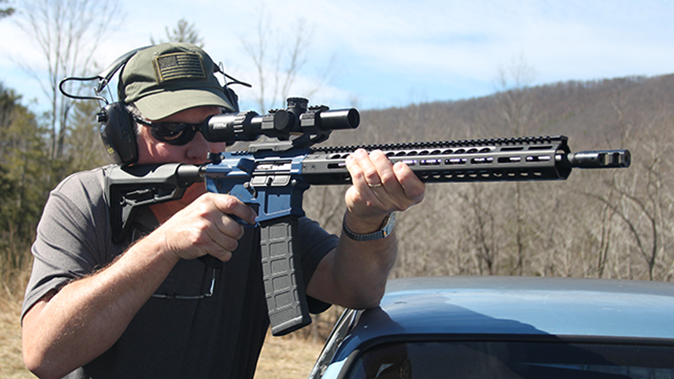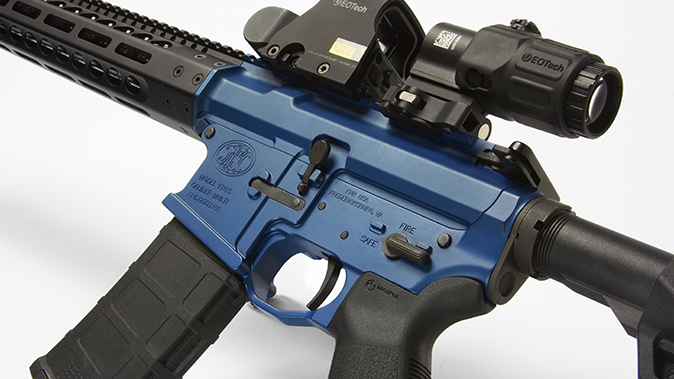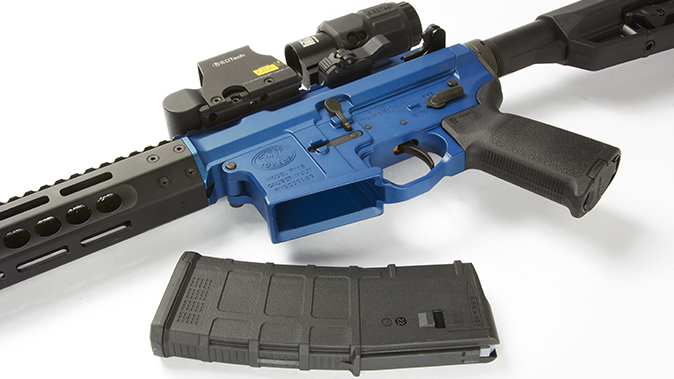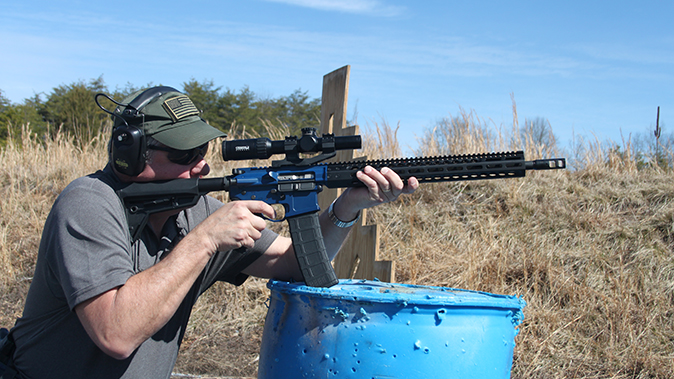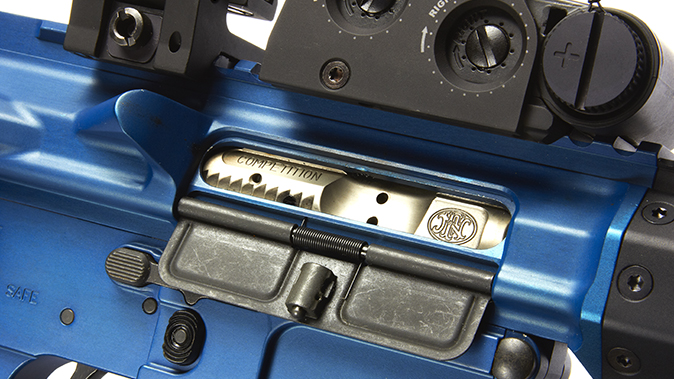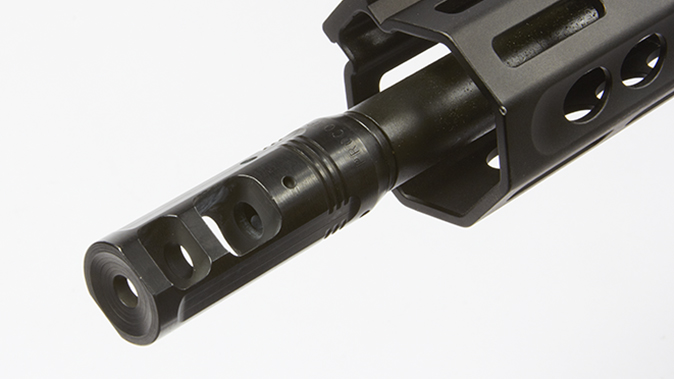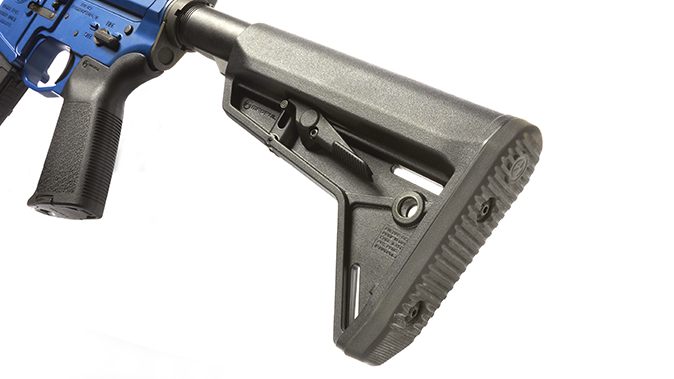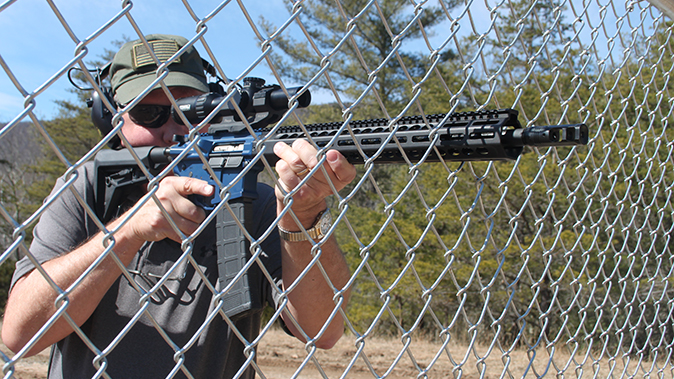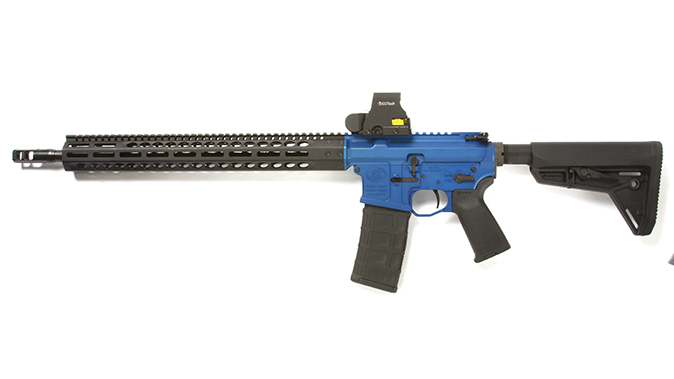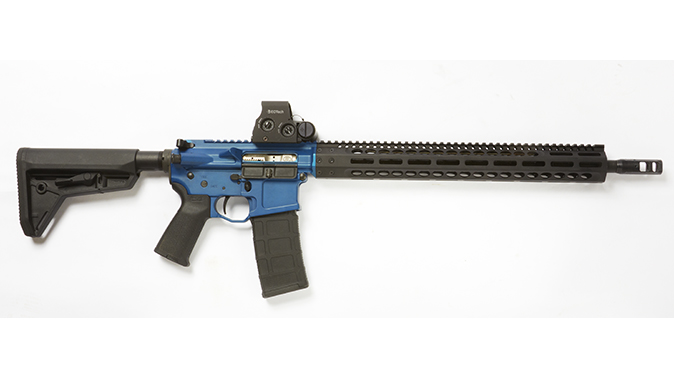A lot of ARs, AKs, SKSs and similar semi-auto rifles have been sold for self-defense in the last few years. Usually, new owners will take their rifles to a shooting range a few times a year to practice basic marksmanship and check the alignment of the sights. Then they put them back in the safe. Like all of us, they hope they’ll never have to use them to protect their homes.
But that rifle just might need to be used someday, and when the balloon goes up, you will quickly learn that using a rifle in self-defense requires a different set of skills from using a handgun. Fortunately, there are three ways to build these skills: professional training, practice drills and formal competition.
Pro Training
The increase in concealed-carry license applications has created a large market for professional firearms trainers. Most states require some type of training for the license, but that training almost always focuses on handguns. Fortunately, there are quite a few firearms training venues that offer defensive rifle courses as well, including Defense Training International, Gunsite Academy, Thunder Ranch, the Big 3 East Training Center, the Telluric Group, Suarez International and many others.
Advertisement — Continue Reading Below
When choosing a professional training course, there are a number of skills to look for. These are skills you can practice at your home range, including shooting from cover, working around corners, moving and shooting, clearing rooms and hallways, reloading, offset aiming at CQB distances, rapidly engaging multiple targets, precise bullet placement, shoot-no shoot scenarios, transitioning to a handgun, low-light operations, malfunction-clearance drills and transitioning to the weak-side shoulder. Most rifle courses cover the majority of these skills while providing a basic rifle safety review.
Range Practice
Practice is the process of converting lessons learned in a rifle class into what many authors have called “muscle memory.” Of course, this term isn’t meant to be taken literally. Muscles don’t remember, nor do they decide to act. Instead, muscle memory is really a series of mental operations that take place in the brain. Basically, the goal of rifle training is to learn the basic rifle skills so well that performing them becomes almost automatic, leaving the brain free to think tactically and create a plan for resolving a threat.
Advertisement — Continue Reading Below
In the past, it was difficult to find ranges where you could do anything but stand still and fire slowly. Fortunately, that’s changing. As more ranges host competitive matches, more are building shooting bays designed for hosting IDPA, IPSC, ICORE and other practical shooting competitions. There are two such ranges within 45 minutes of my home. At these ranges, I can run timed drills and create scenarios that allow me to hone my skills.
Details
I recently used the new FN 15 Competition rifle in 5.56mm NATO to run a couple of basic drills that most anyone can practice in a shooting bay. The FN 15 Competition is a high-end, semi-custom version of the FN 15 Tactical. The FN 15 Competition is specifically designed for 3-Gun and similar tactical matches. This rifle has features like a Timney trigger, billet-crafted upper and lower receivers that have been hardcoat anodized blue, a SureFire ProComp 556 muzzle brake, a free-floating handguard, an H2 buffer to soften recoil, a Magpul MOE-SL stock and a highly reliable nickel-boron-coated bolt carrier group.
For these range drills, I equipped the rifle with Leupold’s 1.25-4x20mm VX-R Patrol scope, which is specifically designed for tactical shooting. This setup ran without a hitch and delivered fast, accurate fire on target using Black Hills’ 50-grain V-MAX ammunition.
Advertisement — Continue Reading Below
First Drill
The first drill was a timed T-shirt aiming drill, and the second was a timed multiple-assailant drill. These are only two of the simpler drills that can be done in a shooting bay. Other drills include reloading drills; shooting-on-the-move exercises; moving to and shooting from improvised cover; vehicle-exit drills; team exercises; and room-clearing drills. Taken together, these drills provide an idea of what can be done once the shooter moves away from “square range” training on a traditional firing line.
The T-shirt drill teaches the shooter to do two things: move off the line of the assailant’s fire and shoot at a target that has no visible scoring rings. It’s simple to perform. When my Competition Electronics timer gives the start beep, I take a large step to the right or left to get away from standing in front of gun muzzles depicted on the targets and get out of the line of fire as I acquire my sights. Then I fire multiple rounds at an aiming point above the center of the chest.
After shooting this drill, I lift the T-shirt to see where the bullets struck. They often tend to hit around the diaphragm, especially for those of us who have trained for years to shoot at the target’s center-mass. It takes a while to learn to adjust your aiming point high enough to hit the center of the chest, especially with a gun like an AR, where the offset between the bore and scope’s line of sight can be as much as 3 inches.
Advertisement — Continue Reading Below
Second Drill
During the drill, I fired five double-taps at the target from 20 yards. The average time was 3.65 seconds, and my total score was 60 out of 100. A number of shots fell just below the 10 ring, so clearly more offset was needed.
The second exercise was a multiple-assailant drill. The target depicted two armed individuals with guns pointed at me. One of the “bad guys” was only partially exposed, leaving just his head and neck visible. I treated the fully exposed target as a failure-to-stop drill requiring one shot to the chest and one to the head. The second “bad guy” required a single head or neck shot. Again, I engaged the targets from 20 yards after taking a big step off the line of fire. My average time for three repetitions was 5.45 seconds, and my total score was 75 out of 100. There were no missed shots during either drill.
Advertisement — Continue Reading Below
Rifle Matches
Competing in multi-gun-style matches provides an opportunity to bring all of your rifle skills together under stress. These competitions require the shooter to develop a plan for identifying threats and neutralizing them in a systematic way. They also require an awareness of the shooter’s surroundings. This means you can’t shoot targets representing bystanders. You also must maintain cover as you engage targets, scan for additional threats and make sure that your gun’s muzzle is not extended beyond cover, where it could be grabbed by an assailant.
In addition, competition requires complex skills like reloading, switching the rifle to your weak side and transitioning from your rifle to your pistol. Shooting on the clock adds pressure. When I shoot matches, however, I take care not to go so fast that it limits my ability to deliver accurate fire. As Wyatt Earp wisely said, “Fast is fine, but accuracy is final.” That’s an important point to remember.
In the end, there are no guarantees when it comes to armed confrontations. The bad guy can always get lucky. That’s why we make every effort to recognize trouble early and get out of the way. However, some armed encounters are unavoidable. To have the best chance of surviving, we need to acquire and build basic skills through professional training, practice and competition.
Advertisement — Continue Reading Below
FN 15 Competition Specs
| Caliber: 5.56mm NATO |
| Barrel: 18 inches |
| OA Length: 35.7-39 inches |
| Weight: 8.1 pounds (empty) |
| Stock: Magpul MOE-SL |
| Sights: None |
| Action: Direct impingement semi-auto |
| Finish: Matte black, blue |
| Capacity: 30+1 |
| MSRP: $2,249 |
For more on the FN 15 Competition, visit fnamerica.com.
This article was originally published in “AR Rifleman” 2017. To order a copy, visit outdoorgroupstore.com.
